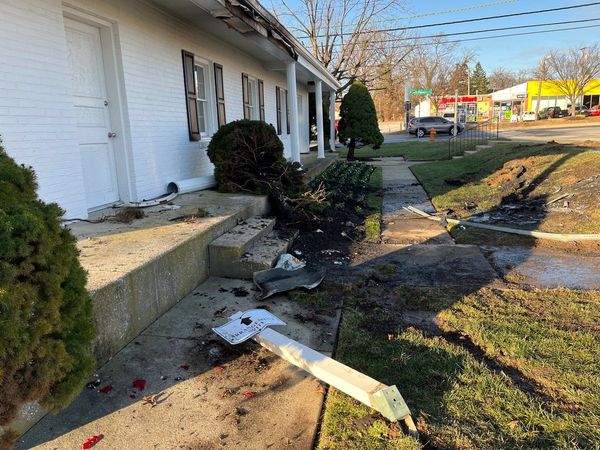
Even the most progressive Australians often regard “listening to Country” as a cultural metaphor rather than a rigorous method to learn empirical truths. But as Gamilaroi woman and educator Lee Couch advised me in 2020, the year of the Black Summer bushfires: “Half of Country was on fire this year. There’s no better time to listen to Country than now.”
If you can’t listen to Country, listen to expert women attuned to the land and you’ll hear how a certain white masculinity is inscribed into Australia’s landscapes. Social geographer Christine Eriksen’s studies are among those finding bushfire “is not a gender-neutral natural phenomenon” but a “means by which traditional gender roles and power relations are maintained”.
This happens in many ways. Climate change is worsening bushfire severity and intensity, and a raft of recent books — most notably, Mary Robinson’s Climate Justice — explain how global warming is a man-made problem with feminist solutions. A product of colonisation, the climate crisis was generated by generations of men who occupy positions of power in governments and industry.
Humans deliberately or accidentally ignite 85% of Australia’s bushfires — 90% of these are lit by men. The Australian Institute of Criminology suggests the arsonist profile is “white male, mid-20s, patchy employment record … and poor social development”.
Different genders and ethnicities have very dissimilar ways of responding to crises, yet state bushfire responses remain commandeered by predominantly white men, and fire bureaucracies remain oriented towards masculinist colonial worldviews. Within these agencies, cultures of sexism thrive, making it hard for women to express their knowledge at best capacity.
Contrary to First Nations understandings, southern states’ bushfire policies regard landscape as a threat and fire as a weapon. Consequently their responses deploy crude and militaristic approaches and scientifically debunked methods such as broadscale forest burning for “fuel load reduction”, repeatedly shown to increase longer-term flammability.
“You can’t fight fire with fire. You have to work with it,” advises the Indigenous-led Firesticks Alliance researcher Dr Peta-Marie Standley. A body of studies show incendiary burns by fire agencies frequently worsen longer-term forest fire risk by promoting flammable woody regrowth, removing moist self-thinning mid-storeys and drying forest floors.
Having made forests more flammable, state agencies have also begun to enlist Indigenous cultural burning practices — or “cool burns” — for bushfire “hazard reduction”. A Wurundjeri uncle in my local landcare group was among the men sent to Cape York as part of a $22.5 million grants program to train Indigenous Victorians in cultural burning. He described the state’s subsequent misappropriation of his knowledge. Anthropologists, too, have documented ways these practices are co-opted by southern state agencies and reduced to fit narrow “fuel reduction” narratives and agendas.
State-funded “traditional” fire practitioners also remain predominantly male — regardless of whether they burn on women’s Country, whether ecosystem stewardship is traditionally women’s business, or whether cultural burns are known traditions in the region. Cultural burns have nuanced, complex specificities — to place, to lore, to knowledge, to cosmology and to climate.
Ecologist Dr Rosemary Hill, who studied Kuku-Yalanji burns in far north Queensland, says they are “extraordinarily fine-scale management … highly consistent with protection of biodiversity” — and so can’t be copied wholesale from one landscape to another, nor reduced to a set of procedures.
Australia’s bushfire responses increasingly fit Naomi Klein’s “disaster capitalism” model, in which reactive “contractors move in and suck up funding for work done badly”. In the Gulf of Carpentaria, Waanyi and Garawa women’s fire practice is known to mitigate bushfires — yet it’s underfunded and poorly understood. “There’s not a lot of literature on women’s traditional roles in fire management, maybe because researchers are generally male and it’s hard for them to hear women’s stories,” explains PhD researcher Kate van Wezel.
Rematriation approaches include pro-forestation, caring for soils and waterways, cultivating circular economies and healing social disadvantage in rural fringe communities where most bushfires are ignited. Social and environment resilience researcher Associate Professor Janet Stanley is among experts explaining how social disadvantage worsens bushfire risks and how policy can “reduce both social injustices and the occurrence of bushfires”. Some women, such as Associate Professor Marta Yebra, have invented satellite and drone systems that could “detect bushfires early and put them out within minutes”.
Expert women say we need to redress a lethal imbalance. Rematriating involves “looking at the land like a mother or a family member”, says Budawang researcher Sian Hromek, a Firesticks Alliance director, in a recent interview. Country, she explains, “is our life force. This is where we’ve come from and where we’re going back to, so we treat it like a relationship. We’re the ones who need to lead this, and link arms with government … If Indigenous people aren’t leading, then you aren’t learning … The social implications are really important.”
Expert women say Australia can’t address its bushfire crises using the very structures and mindsets that enabled them. First Nations and non-Indigenous women can’t heal Country using the systems whose impacts they seek to repair, and Australia won’t prevent megafires while excluding more than half its citizenry.
Is it time to let the experts, Indigenous women, teach us how to fight fire? Let us know by writing to letters@crikey.com.au. Please include your full name to be considered for publication. We reserve the right to edit for length and clarity.







